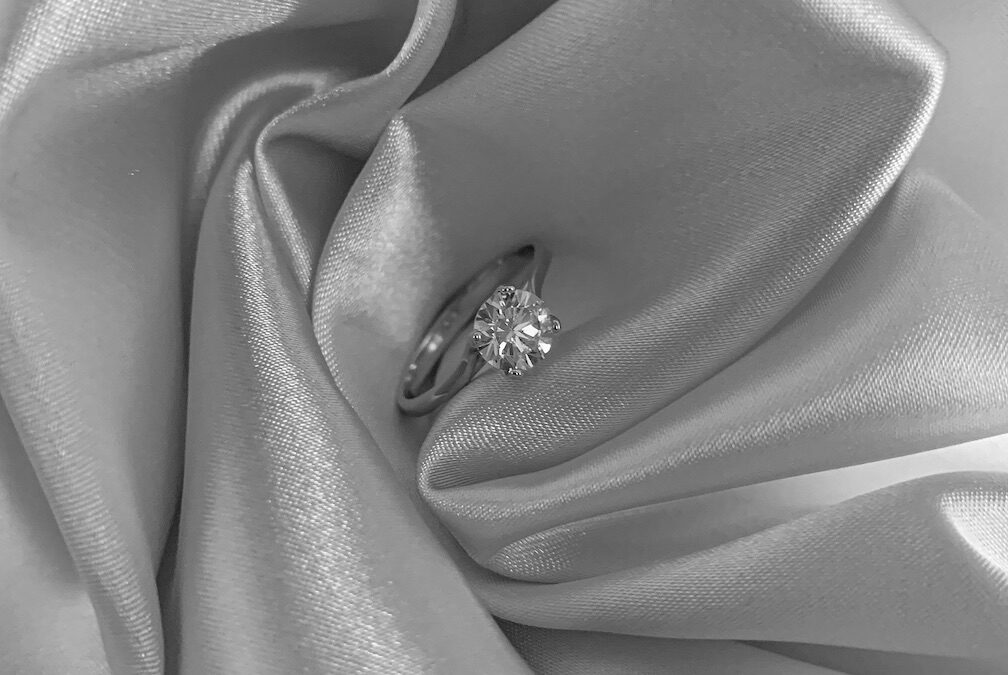By Cara Barilla – Educational Columnist and Journalist
Diamonds are captivating gemstones that symbolize love, elegance, and eternal beauty. When selecting a diamond, it’s essential to consider the shape and cut, as they greatly influence the stone’s brilliance, clarity, and overall appearance. In this article, we will explore the differences between diamond shapes, their cuts of light reflection, the importance of choosing a clear diamond, and the role of fluorescent diamonds.
1. Diamond Shapes
Diamonds come in various shapes, each with its own unique characteristics and aesthetic appeal. Here are some popular diamond shapes:
a) Round Brilliant: The round brilliant cut is the most classic and popular diamond shape, known for its exceptional brilliance. It has 58 facets that maximize the reflection and refraction of light, creating a dazzling sparkle.
b) Princess Cut: The princess cut is a square or rectangular-shaped diamond with pointed corners. It combines the brilliance of a round cut with a modern, geometric appeal.
c) Emerald Cut: The emerald cut is a rectangular or square shape with step-cut facets. It highlights the diamond’s clarity and offers a sophisticated, vintage-inspired look.
d) Cushion Cut: The cushion cut is characterized by rounded corners and larger facets. It exudes a romantic and timeless charm, with a balance of brilliance and a soft, pillow-like appearance.
e) Asscher Cut: The asscher cut is similar to the emerald cut but features a square shape with larger step-cut facets. It reflects light beautifully and showcases the diamond’s clarity.
2. Light Reflection and Brilliance
The cut of a diamond greatly impacts its ability to reflect light and create brilliance. The quality of a diamond’s cut determines how effectively it interacts with light. Here’s how different cuts affect light reflection:
a) Ideal Cut: An ideal cut diamond is crafted to precise proportions and angles, maximizing light reflection and brilliance. It offers exceptional sparkle and fire, creating a mesmerizing display of light.
b) Shallow Cut: A shallow cut diamond does not reflect light as effectively, resulting in reduced brilliance. Light tends to leak from the bottom, impacting the stone’s overall sparkle and beauty.
c) Deep Cut: A deep cut diamond retains light within the stone for a longer duration, resulting in increased brilliance. However, if cut too deep, it can cause light to escape from the sides, reducing overall brilliance.
3. Clarity and Choosing a Clear Diamond
Diamond clarity refers to the absence of internal inclusions and external blemishes. A clear diamond with excellent clarity enhances its beauty and value. When assessing clarity, consider the following grades:
a) Flawless (FL) and Internally Flawless (IF): These grades represent the highest clarity levels, with no internal or external flaws visible under 10x magnification. They offer the utmost transparency and brilliance.
b) Very, Very Slightly Included (VVS): VVS diamonds have minuscule inclusions that are extremely difficult to detect under magnification. They offer exceptional clarity and are highly sought after.
c) Very Slightly Included (VS) and Slightly Included (SI): VS and SI diamonds may have slight inclusions visible under magnification. However, they are still considered eye-clean and offer excellent value for money.
4. Fluorescent Diamonds
Some diamonds exhibit fluorescence, a phenomenon where the stone emits a soft glow when exposed to ultraviolet light. Fluorescence can have varying effects on a diamond’s appearance:
a) Faint Fluorescence: Faint fluorescence is generally not visible to the naked eye and does not affect a diamond’s beauty or value. In some cases, it may even enhance the stone’s perceived color, making it appear whiter.
b) Strong Fluorescence: Diamonds with strong fluorescence may appear milky or hazy in certain lighting conditions, diminishing their brilliance and value. However, it’s essential to evaluate such diamonds individually, as some strong fluorescent diamonds can still exhibit excellent beauty.
Choosing the perfect diamond involves considering the shape, cut, light reflection, clarity, and the presence of fluorescence. Each diamond shape offers a unique appeal, while the cut determines its brilliance. Choosing a clear diamond with excellent clarity ensures maximum beauty and value. Remember to assess diamonds individually, taking into account their specific characteristics and your personal preferences. Selecting a diamond that captures light in the most enchanting way will result in a truly breathtaking and timeless piece of jewellery.






